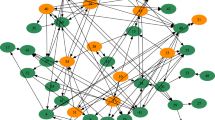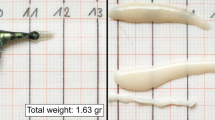Abstract
Kleptoparasitic spiders live and forage in the webs of other spiders. Using vibratory cues generated by the host spider during prey capture, they leave their resting positions in the upper peripheries of the host web and move towards the centre of the web where they feed along with the host spider or steal small pieces of prey. While the triggers for initiating the foraging raids are known, there is little information about the fine-scale trajectory dynamics in this model system. We mapped the movement of the kleptoparasite Argyrodes elevatus in the web of the host Trichonephila clavipes. We filmed the movement of the kleptoparasite spiders and quantified the trajectory shape, speed, heading directions and path revisitation. Our results show that kleptoparasitic spider movement is spatially structured, with higher levels of speed at the peripheries and slower in the centre of the web. We found a high level of variation in trajectory shapes between individuals. We found that the majority of heading orientations were away from the hub suggesting that detouring or repeated approaches are an essential component of kleptoparasite movement strategies. Our results of the revisitation rate also confirm this pattern, where locations close to the hub were revisited more often than in the periphery. The kleptoparasite–host spider system is a promising model to study fine-scale movement patterns in small bounded spaces.







Similar content being viewed by others
References
Agnarsson I (2003) Spider webs as habitat patches—The distribution of kleptoparasites (Argyrodes, theridiidae) among host webs (Nephila, tetragnathidae). J Arachnol 31(3):344–349
Bracis C, Bildstein KL, Mueller T (2018) Revisitation analysis uncovers spatio-temporal patterns in animal movement data. Ecography 41:1801–1811. https://doi.org/10.1111/ecog
Cangialosi K (1991) Attack strategies of a spider kleptoparasite: effects of prey availability and host colony size. Anim Behav 41:639–647. https://doi.org/10.1016/S0003-3472(05)80902-9
Collett TS, Zeil J (1996) Flights of learning. Curr Dir Psychol Sci 5:149–155
Elgar MA (1989) Kleptoparasitism: a cost of aggregating for an orb-weaving spider. Anim Behav 37:1052–1055
Gaffin DD, Curry CM (2020) Arachnid navigation—a review of classic and emerging models. J Arachnol 48:1–26. https://doi.org/10.1636/0161-8202-48.1.1
Garber PA, Porter LM (2014) Navigating in small-scale space: the role of landmarks and resource monitoring in understanding saddleback tamarin travel. Am J Primatol 76(5):447–459. https://doi.org/10.1002/ajp.22196
Fu AW, Keogh E, Lau LY, Ratanamahatana CA, Wong RC (2008) Scaling and time warping in time series querying. VLDB J 17(4):899–921
Hemmi JM, Zeil J (2005) Animals as prey: perceptual limitations and behavioural options: sensory biology: linking the internal and external ecologies of marine organisms. Mar Ecol Prog Ser (Halstenbek) 287:274–278
Hénaut Y, Delme J, Legal L, Williams T (2005) Host selection by a kleptobiotic spider. Naturwissenschaften 92(2):95–99
Hu B, Chen Y, Keogh E (2013) Time series classification under more realistic assumptions. In: Proceedings of the 2013 SIAM international conference on data mining 2013. Society for Industrial and Applied Mathematics, pp 578–586
Iyengar EV (2008) Kleptoparasitic interactions throughout the animal kingdom and a re-evaluation, based on participant mobility, of the conditions promoting the evolution of kleptoparasitism. Biol J Linn Soc 93(4):745–762
Keogh E, Ratanamahatana CA (2005) Exact indexing of dynamic time warping. Knowl Inf Syst 7(3):358–386
Kuntner M, Hamilton CA, Cheng RC, Gregorič M, Lupše N, Lokovšek T, Lemmon EM, Lemmon AR, Agnarsson I, Coddington JA, Bond JE (2019) Golden orbweavers ignore biological rules: phylogenomic and comparative analyses unravel a complex evolution of sexual size dimorphism. Syst biol 68(4):555–572
Layne J, Barnes W, Duncan L (2003) Mechanisms of homing in the fiddler crab Uca rapax 1. Spatial and temporal characteristics of a system of small-scale navigation. J Exp Biol 206:4413–4423
Mather JA (1991) Navigation by spatial memory and use of visual landmarks in octopuses. J Comp Physiol A 168:491–497. https://doi.org/10.1007/BF00199609
Narendra A (2020) Orientation by central-place foragers. In: Encyclopedia of Social Insects. Springer, Springer Nature,
Rao D, Tapia-McClung H, Narendra A (2019) Reeling in the prey: Fishing behaviour in an orb web spider. J Exp Biol 1:9. https://doi.org/10.1242/jeb.213751
Reppert SM, de Roode JC (2018) Demystifying monarch butterfly migration. Curr Biol 28:R1009–R1022. https://doi.org/10.1016/j.cub.2018.02.067
Robinson MH, Mirick H (1971) The predatory behavior of the golden-web spider Nephila clavipes (Araneae: Araneidae). Psyche 78:123–139
Stürzl W, Grixa I, Mair E, Narendra A, Zeil J (2015) Three-dimensional models of natural environments and the mapping of navigational information. J Comp Physiol A 201(6):563–584
Stellwag LM, Dodson GN (2010) Navigation by male crab spiders Misumenoides formosipes (Araneae: Thomisidae): Floral cues may aid in locating potential mates. J Ins Behav 23:226–235. https://doi.org/10.1007/s10905-010-9209-9
Troup G, Doran B, Au J, King LE, Douglas-Hamilton I, Heinsohn R (2020) Movement tortuosity and speed reveal the trade-offs of crop raiding for African elephants. Anim Behav 168:97–108. https://doi.org/10.1016/j.anbehav.2020.08.009
Ubick D, Paquin P, Cushing PE, Roth VD (2017) Spiders of North America: an identification manual. American Arachnological Society
Vollrath F (1979a) Behaviour of the kleptoparasitic spider Argyrodes elevatus (Araneae, Theridiidae). Anim Behav 27:515–521
Vollrath F (1979b) Vibrations: their signal function for a spider kleptoparasite. Science 205:1149–1151. https://doi.org/10.1126/science.205.4411.1149
Vollrath F (1984) Kleptobiotic interactions in invertebrates. In: Barnard C (ed) Producers and scroungers: strategies of exploitation and parasitism. Springer, US, pp 61–94
Whitehouse MEA (1997) The benefits of stealing from a predator: foraging rates, predation risk, and intraspecific aggression in the kleptoparasitic spider Argyrodes antipodiana. Behav Ecol 8:663–667
Whitehouse M, Agnarsson I, Miyashita T, Smith D, Cangialosi K, Masumoto T, Li D, Henaut Y (2002) Argyrodes: phylogeny, sociality and interspecific interactions—A report on the Argyrodes symposium, Badplaas 2001. J Arachnol 30:238–245
Wiegmann DD, Hebets EA, Gronenberg W, Graving JM, Bingman VP (2016) Amblypygids: model organisms for the study of arthropod navigation mechanisms in complex environments? Front Behav Neurosci 10:1–8. https://doi.org/10.3389/fnbeh.2016.00047
Wolfram Research, Inc. (2020) Mathematica, Version 12.2. Champaign, IL
Zeil J, Fleischmann PN (2019) The learning walks of ants (Hymenoptera: Formicidae). Myrmecol News 29:93–110. https://doi.org/10.25849/myrmecol.news_029:093
Acknowledgements
We thank Carlos Carmona Bonilla and Diana Debernardi Hernández for help in data collection and care of spiders and Yann Henaut for support. We thank Luis Quijano Cuervo for identification of the kleptoparasite species. RRG was supported by a M.Sc. scholarship from CONACyT, Mexico. This study was partially supported by a travelling fellowship from the Company of Biologists to DR. HTM acknowledges support from CONACyT Problemas Nacionales Grant # 5150 and Fronteras de la Ciencia Grant # 425854.
Author information
Authors and Affiliations
Contributions
Data collection—RRG. Writing original draft—DR. Writing and revision—DR, RRG, AN and HTM. Analysis—DR, RRG, AN and HTM. Visualisation—DR, RRG, AN and HTM. Conceptualisation—DR. Project administration—DR.
Corresponding author
Ethics declarations
Conflict of interest
The authors declare they have no conflict of interests. All spiders were released after experiments. Data will be made available on request.
Additional information
Publisher's Note
Springer Nature remains neutral with regard to jurisdictional claims in published maps and institutional affiliations.
Supplementary Information
Below is the link to the electronic supplementary material.
S1: Animated time lapse movie of a single kleptoparasite trajectory overlaid on the image of a host web. Trailing colours in the dot represent speed of the kleptoparasite. The movie is available at this location. https://www.dropbox.com/s/jx58sjhnx1lvmzl/S1_argyrodes%20sample%20trajectory.mp4.mov?raw=1
Rights and permissions
About this article
Cite this article
Rosales-García, R., Tapia-McClung, H., Narendra, A. et al. Many paths, one destination: mapping the movements of a kleptoparasitic spider on the host’s web. J Comp Physiol A 207, 293–301 (2021). https://doi.org/10.1007/s00359-021-01477-3
Received:
Revised:
Accepted:
Published:
Issue Date:
DOI: https://doi.org/10.1007/s00359-021-01477-3




